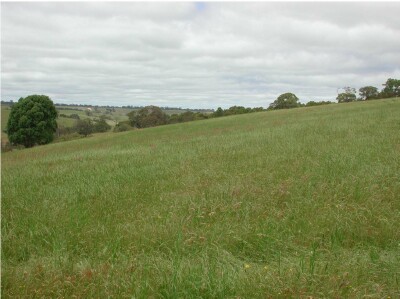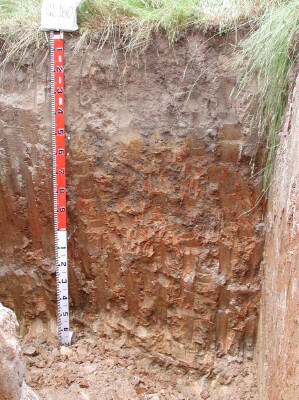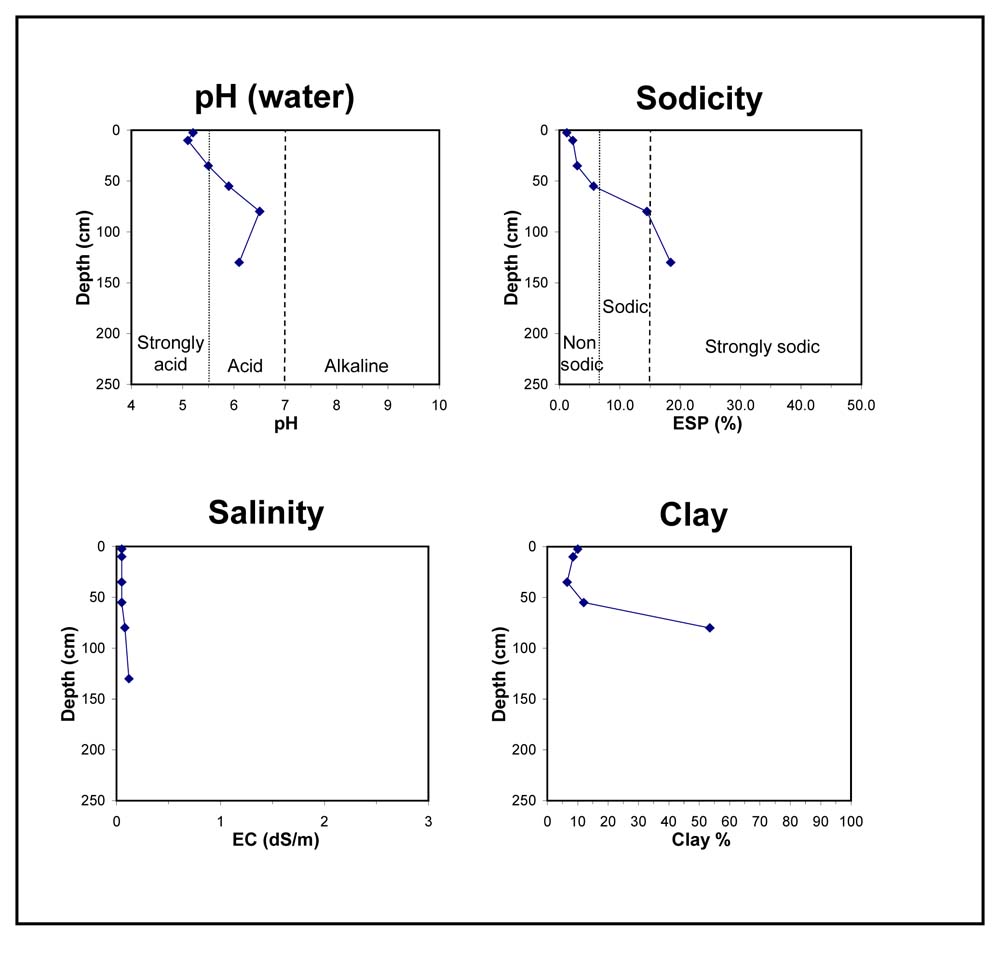GL160
| Site: GL160 | Land Unit: Glenelg River Granite |
| Aust. Soil Class.: Vertic, Mottled-Subnatric, Brown SODOSOL (confidence level 1) | |
 | General Land Unit Description: In the steeper dissected valleys of the tablelands, where the duricrust has been eroded, weathered parent material becomes exposed. The soils at this site appear to have been developed over weathered granitic rock, one of the many types of parent material found in the Dundas tablelands. The site is located on an upper slope off the tableland, leading to a water course. This site illustrates the range of soil types and parent material that have been exposed due to weathering of the tablelands and highlights the difficulty of mapping all the geologies and soil types at this scale. |
Site Description:
| Slope: 12% | Geology: Cambrian granite |
| Landform pattern: Low hill | Position in landscape: Upper slope |
| Internal drainage: Imperfectly drained |
Soil Profile Morphology
| A1 | 0-5 cm | Dark greyish brown (10YR4/2) loamy sand, weak subangular blocky structure (5-10 mm), firm to weak consistence when dry pH 5.2. Clear transition to: |  |
| A21 | 5-15 cm | Brown (10YR5/3) loamy sand, conspicuously bleached (10YR6/2) when dry, massive structure, very firm consistence when dry, pH 5.1. Gradual transition to: | |
| A22 | 15-50 cm | Brown (10YR5/3) loamy sand to sand, conspicuously bleached (10YR7/1) when dry, a few faint medium yellow mottles, massive structure, firm consistence when dry, pH 5.5. Clear transition to: | |
| A23 | 50-60 cm | Very pale brown (10YR7/3), clayey sand to sandy clay loam, conspicuously bleached (10YR82) when dry, many distinct coarse yellowish brown (10YR5/6) mottles, massive structure, firm consistence when dry, few medium subangular quartz pebbles (6-20 mm), pH 5.9. Clear to abrupt transition to: | |
| Subsoil | |||
| B2 | 60-100 cm | Brown (10YR4/3), heavy clay, many prominent medium dark yellowish brown (10YR4/6) strong brown (7.5YR5/6) and light yellowish brown (2.5Y6/3) mottles, weak columnar structure (100-200 mm) parting to strong lenticular structure, firm consistence when dry, few distinct clay skins present, pH 6.5. Gradual transition to: | |
| B3 | 100-160 cm | Light olive brown (2.5YR5/3), heavy clay, many prominent coarse red (2.5YR4/6) and yellowish red (5YR5/6) mottles, moderate lenticular structure, pH 6.1. Abrupt transition to: | |
| C | 160+ cm | Weathered granite |
Key profile features:
- Acidic topsoil
- Strong textural contrast between topsoil and subsoil
- Mottled subsoil
- Sodic subsoil
- Subsoil dispersive when dry



